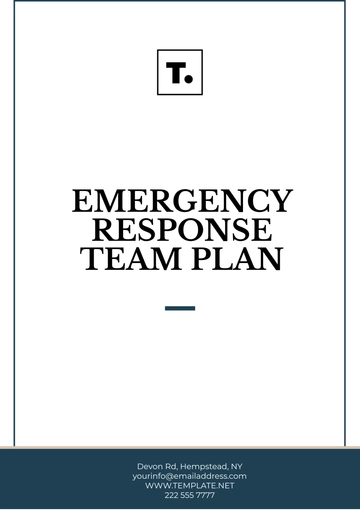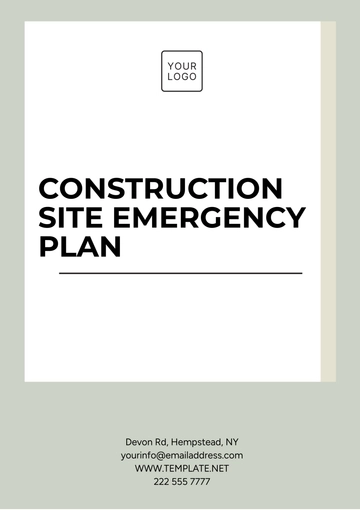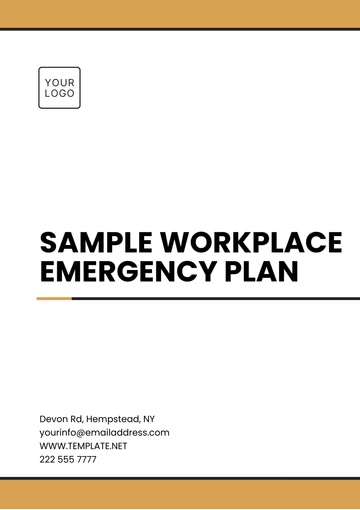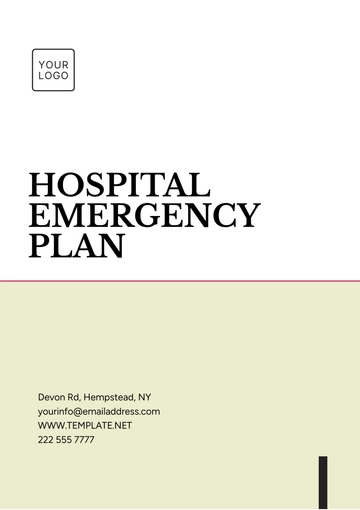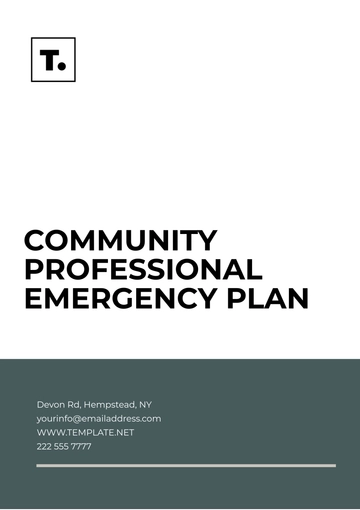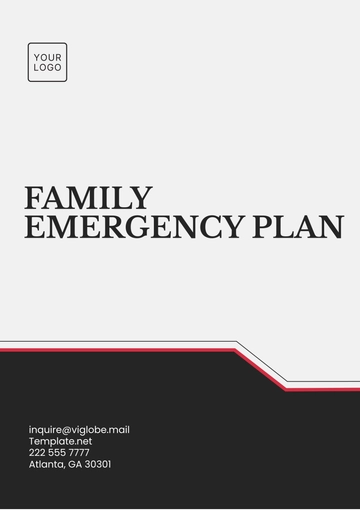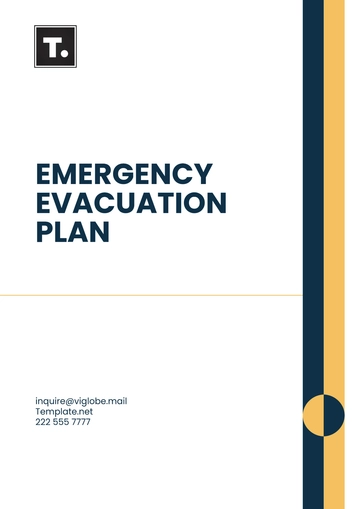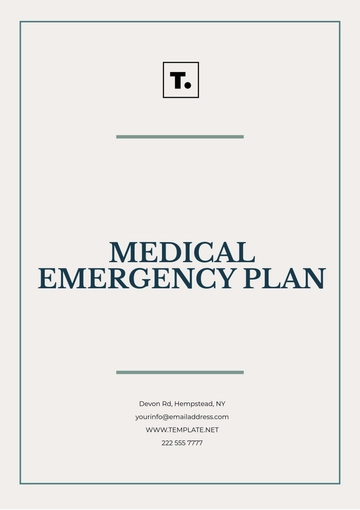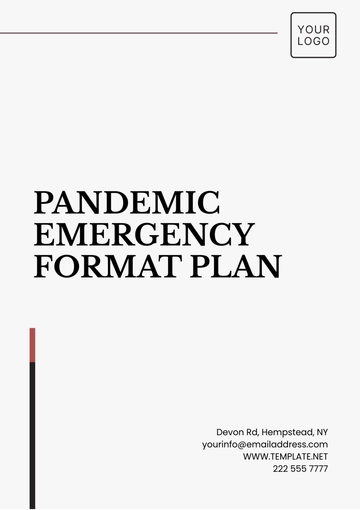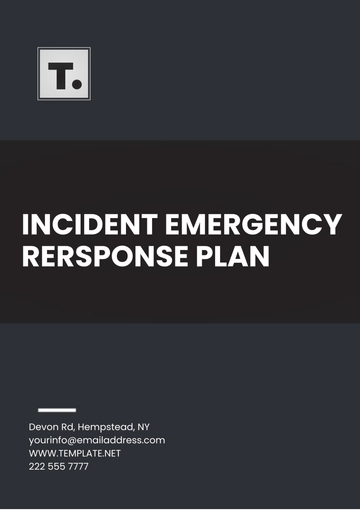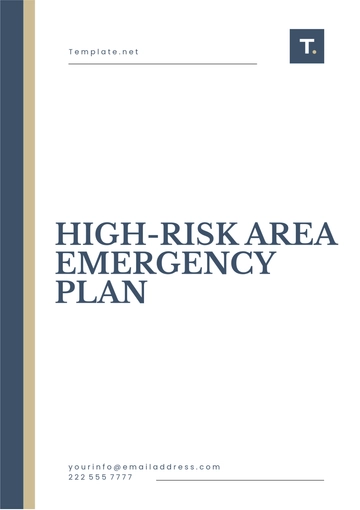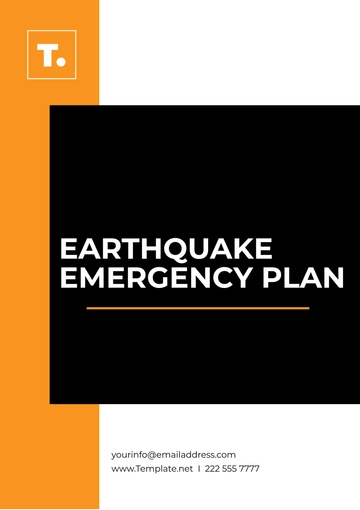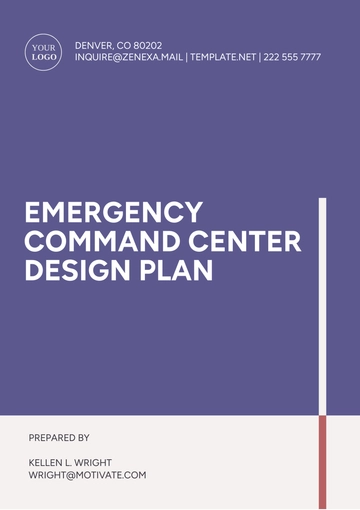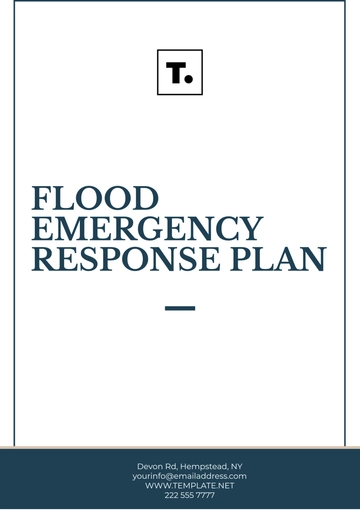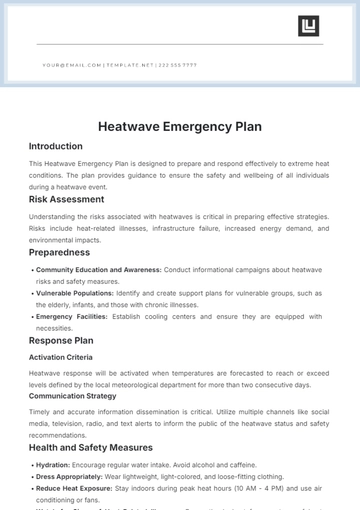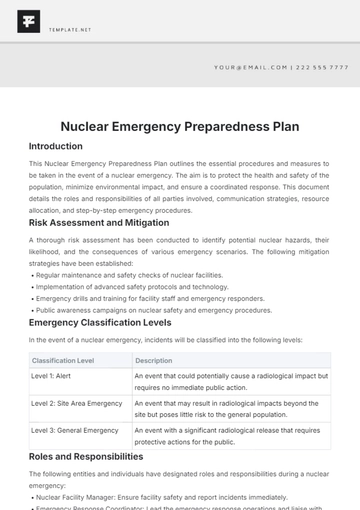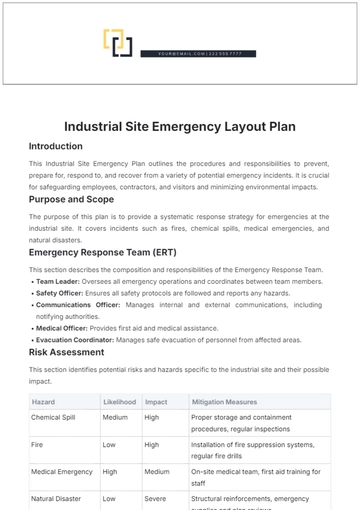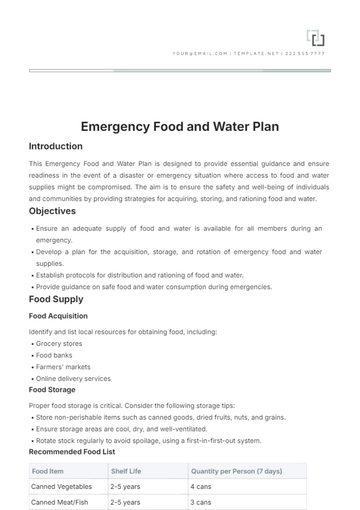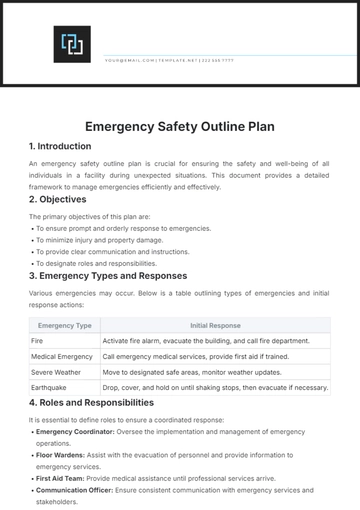Free Workplace Emergency Evacuation Plan

Prepared by: [Your Name]
Date: January 6, 2050
I. Introduction
The Workplace Emergency Evacuation Plan for [Your Company Name] at [Your Company Address] is designed to protect employees and visitors in the event of an emergency. It outlines the steps to be taken during various emergencies, including fire, natural disasters, or other hazards, ensuring safe and swift evacuations.
II. Emergency Contact Information
Below is a table listing key emergency personnel and their contact details. These individuals are responsible for coordinating the evacuation process and ensuring safety.
Role | Name | Contact Information |
|---|---|---|
Emergency Coordinator | Jonatan Farrell | jonatan@you.mail |
Safety Officer | Winona Harvey | winona@you.mail |
Medical Officer | Etha Lehner | etha@you.mail |
III. Evacuation Procedures
A. Alarm and Notification System
The alarm system will sound in the event of an emergency, indicating the need to evacuate the building. Once the alarm is heard, all employees must proceed to the nearest exit.
B. Evacuation Routes
Clear and accessible evacuation routes have been established throughout the building. Employees should familiarize themselves with the location of exits. All routes are clearly marked with illuminated exit signs.
C. Assembly Points
Once evacuated, all employees will assemble at designated assembly points located outside the building. The following table outlines the primary assembly locations:
Location | Description |
|---|---|
Front Parking Lot | The main area for all employees to gather. |
Back Entrance Area | For employees located at the rear of the building. |
IV. Special Considerations
A. Medical Emergencies
In case of medical emergencies, [Your Company Name] maintains first aid kits and an emergency medical response plan. The Medical Officer will oversee treatment until professional help arrives.
B. Visitor Safety
Visitors to the facility will be escorted to the nearest exit by designated staff members. A headcount will be conducted at the assembly points to ensure no one is left behind.
V. Communication Plan
In an emergency, communication is key. [Your Company Name] will use multiple systems to ensure all employees and visitors are informed:
Emergency Alerts: A notification system will send out messages via email and text to all employees.
Public Announcements: The building’s PA system will be used to issue clear instructions.
Radio Communication: Radios will be distributed to key personnel for coordination during evacuation.
VI. Post-Evacuation Protocol
A. Headcount and Roll Call
Once at the assembly points, all employees will be accounted for by their department supervisors. A headcount will ensure no one remains inside the building.
B. Review of Evacuation
After the evacuation is complete, a debriefing will be held to evaluate the response. Feedback will be collected to improve future evacuations.
The Workplace Emergency Evacuation Plan for [Your Company Name] ensures the safety of all personnel during emergencies by outlining a clear and organized process for evacuations.
- 100% Customizable, free editor
- Access 1 Million+ Templates, photo’s & graphics
- Download or share as a template
- Click and replace photos, graphics, text, backgrounds
- Resize, crop, AI write & more
- Access advanced editor
Ensure workplace safety with Template.net's Workplace Emergency Evacuation Plan Template. This editable and customizable tool provides a structured framework for creating comprehensive evacuation plans. Utilize our intuitive Ai Editor Tool to tailor the plan to your organization's specific needs effortlessly, promoting efficient evacuation procedures and safeguarding employees in emergencies.
You may also like
- Finance Plan
- Construction Plan
- Sales Plan
- Development Plan
- Career Plan
- Budget Plan
- HR Plan
- Education Plan
- Transition Plan
- Work Plan
- Training Plan
- Communication Plan
- Operation Plan
- Health And Safety Plan
- Strategy Plan
- Professional Development Plan
- Advertising Plan
- Risk Management Plan
- Restaurant Plan
- School Plan
- Nursing Home Patient Care Plan
- Nursing Care Plan
- Plan Event
- Startup Plan
- Social Media Plan
- Staffing Plan
- Annual Plan
- Content Plan
- Payment Plan
- Implementation Plan
- Hotel Plan
- Workout Plan
- Accounting Plan
- Campaign Plan
- Essay Plan
- 30 60 90 Day Plan
- Research Plan
- Recruitment Plan
- 90 Day Plan
- Quarterly Plan
- Emergency Plan
- 5 Year Plan
- Gym Plan
- Personal Plan
- IT and Software Plan
- Treatment Plan
- Real Estate Plan
- Law Firm Plan
- Healthcare Plan
- Improvement Plan
- Media Plan
- 5 Year Business Plan
- Learning Plan
- Marketing Campaign Plan
- Travel Agency Plan
- Cleaning Services Plan
- Interior Design Plan
- Performance Plan
- PR Plan
- Birth Plan
- Life Plan
- SEO Plan
- Disaster Recovery Plan
- Continuity Plan
- Launch Plan
- Legal Plan
- Behavior Plan
- Performance Improvement Plan
- Salon Plan
- Security Plan
- Security Management Plan
- Employee Development Plan
- Quality Plan
- Service Improvement Plan
- Growth Plan
- Incident Response Plan
- Basketball Plan
- Emergency Action Plan
- Product Launch Plan
- Spa Plan
- Employee Training Plan
- Data Analysis Plan
- Employee Action Plan
- Territory Plan
- Audit Plan
- Classroom Plan
- Activity Plan
- Parenting Plan
- Care Plan
- Project Execution Plan
- Exercise Plan
- Internship Plan
- Software Development Plan
- Continuous Improvement Plan
- Leave Plan
- 90 Day Sales Plan
- Advertising Agency Plan
- Employee Transition Plan
- Smart Action Plan
- Workplace Safety Plan
- Behavior Change Plan
- Contingency Plan
- Continuity of Operations Plan
- Health Plan
- Quality Control Plan
- Self Plan
- Sports Development Plan
- Change Management Plan
- Ecommerce Plan
- Personal Financial Plan
- Process Improvement Plan
- 30-60-90 Day Sales Plan
- Crisis Management Plan
- Engagement Plan
- Execution Plan
- Pandemic Plan
- Quality Assurance Plan
- Service Continuity Plan
- Agile Project Plan
- Fundraising Plan
- Job Transition Plan
- Asset Maintenance Plan
- Maintenance Plan
- Software Test Plan
- Staff Training and Development Plan
- 3 Year Plan
- Brand Activation Plan
- Release Plan
- Resource Plan
- Risk Mitigation Plan
- Teacher Plan
- 30 60 90 Day Plan for New Manager
- Food Safety Plan
- Food Truck Plan
- Hiring Plan
- Quality Management Plan
- Wellness Plan
- Behavior Intervention Plan
- Bonus Plan
- Investment Plan
- Maternity Leave Plan
- Pandemic Response Plan
- Succession Planning
- Coaching Plan
- Configuration Management Plan
- Remote Work Plan
- Self Care Plan
- Teaching Plan
- 100-Day Plan
- HACCP Plan
- Student Plan
- Sustainability Plan
- 30 60 90 Day Plan for Interview
- Access Plan
- Site Specific Safety Plan

